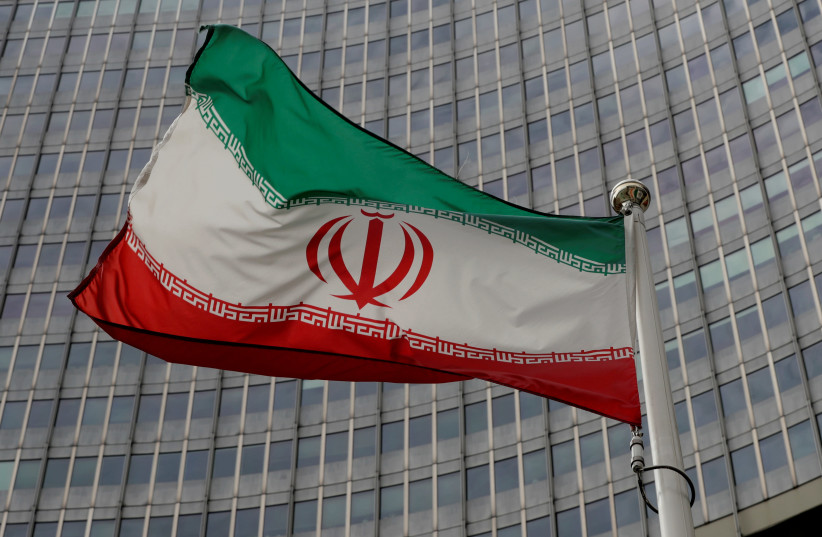The area that is today called the Islamic Republic of Iran has a long and colorful history under the name of Persia. It is from the scroll of Esther, which we read on the Jewish festival of Purim, that we know about Ahasuerus, a king of Persia who prevented the annihilation of Jews by his viceroy Haman and his 10 sons. We usually take that as the first indication that Jews lived in Persia.
Some historians concluded that Ahasuerus was in fact Xerxes, the king who ruled from 486 to 465 BCE. But Jews had been residing in Persia long before that.
It was in 586 BCE, when Nebuchadnezzar of Babylonia conquered the city of Jerusalem and destroyed the Temple, that many of the inhabitants of Judah fled into exile. That is the origin of the Jewish diaspora in Persia.
But as under King Cyrus, the Persian Empire encompassed the areas of modern-day Iran, Egypt, Turkey, and parts of Afghanistan and Pakistan. Jews dispersed into all those areas. Hence, the word “Hebrew” means “wanderer,” and the biblical term Ivri translates into “traverse.”
Fifty years later, Cyrus captured Babylon and made his famous declaration which allowed those Hebrews who were living in exile by the river of Babylon to return to their homeland, Judea, and rebuild their lives.

What is the history of Islamic Iran?
So much for the early background of Jews in Persia. Following much opposition, Zoroastrianism, the ancient belief system of Persia, was replaced when the area came under the influence of Islam, which means “submission.” Hence, “Muslim” means “one who submits.”
It was in the mid-19th century when a struggle began between the Shia Muslims, who followed Ali as the descendant of Abū al-Qāsim Muḥammad, the founder of Islam and proclaimer of the Quran, and those of Sayyed Alí Muḥammad Shírází, known as the “Bab,” the central figure of the emerging Bahai faith.
It’s interesting to note that the better-known split of the believers in the Quran is between Shi’as and Sunnis, where the latter insist that Abu Bakr is the revered successor of Muhammad.
Muslims comprise 25% of the world’s population. Only 15% of all Muslims are Shi’a, the branch of Islam that dominates today’s militant Iran. Some 85% of all 1.97 billion adherents to Islam are Sunnis.
Throughout the ages, Persia was an epicenter of religious strife in the Middle East. Its religion was Sunni but converted to Shi’a with the beginning of the monarchy that ruled almost without interruption by an emperor from 1501 and became a world power next to the neighboring Ottoman Empire, its arch rival for centuries.
At the height of the Cold War in 1953, UK prime minister Winston Churchill and the US Eisenhower administration deemed the Iranian democratically elected prime minister Mohammad Mosaddegh to be unreliable. Fearing a communist takeover, they decided that he must go.
So, on August 19, 1953, the US and the UK instigated a coup d’état to overthrow Mosaddegh and to strengthen the monarchical rule of the Shah, Mohammad Reza Pahlavi. He began as prime minister in 1923 and, due mainly to his military prowess, parliament voted him the new leader of the people. In 1926 he was named Reza Shah Pahlavi, the first Shah of the Pahlavi dynasty.
Although he was Muslim, he promoted secularism in Iran and tried to eliminate the influence of the Shi’a clergy on the government and the society. But the Shah’s lack of emphasis on religious values caused unrest and violent demonstrations.
In a March 1979 referendum, 98% voted to approve the country’s shift to an Islamic republic. The shah, the son of the man who started the dynasty in 1926, had to flee the country. The new government, with Ayatollah Ruhollah Khomeini as supreme leader, drafted a constitution.
On April 1, 1979, the country officially became the Islamic Republic of Iran. Since then, Iran’s successive leaders have presented Israel as the threat to al-Aqsa in Jerusalem and are inventing various fake news stories about Israel’s intentions as the glue to keep the population united.
The current 83-year-old Supreme Leader Ayatollah Ali Hosseini Khamenei has repeatedly declared his intention to wipe Israel off the face of the Earth, probably with the nuclear weapons Iran is said to be developing.
Israel’s government is taking the threats seriously and is determined with all the means at its disposal to prevent Iran’s nuclear breakout. ■
The writer, a regular contributor to this publication, recently entered his 100th year of life and holds Guinness records for the oldest working journalist and broadcaster in the world.
